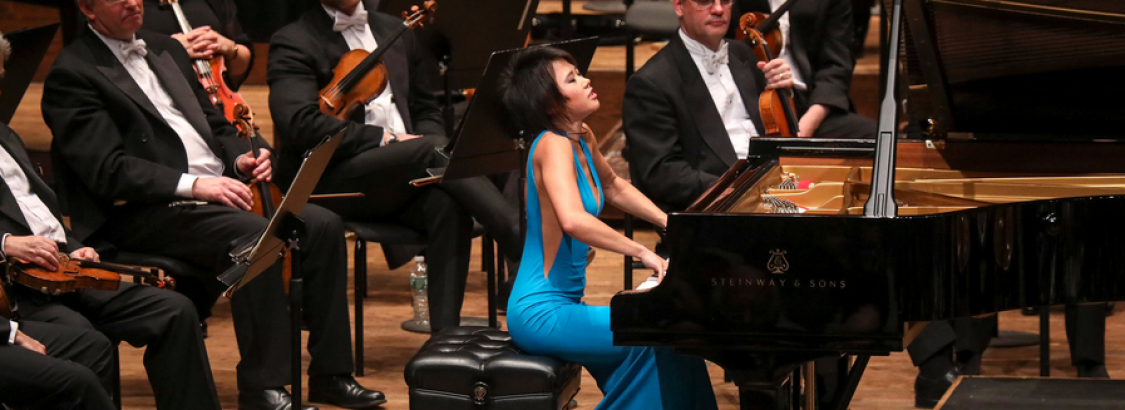David Bratman, San Francisco Classical Voice
Santa Cruz, nearly cut off from the San Francisco Bay Area by mudslides, fallen trees, and flooded roads, had something to keep it toasty warm last weekend: Pianist Yuja Wang performed with the Santa Cruz Symphony on Saturday, Feb.18. Yuja, as she prefers to be known, is “the highest profile soloist to ever be featured in Santa Cruz,” enthused Symphony Music Director Daniel Stewart. Quite a distinction for a performer who had just turned 30 a week earlier.
The audience at the Santa Cruz Civic Auditorium was certainly delighted to have her, applauding after almost every movement. And there were a lot of movements, for Yuja, whose effortless energy is her most striking characteristic, played two long concertos that took up the entire program: Brahms’s Piano Concerto No. 2 in B-flat, Op. 83 (four movements) and Prokofiev’s Piano Concerto No. 5 in G, Op. 55 (five movements).
Each is its composer’s final piano concerto, but they’re entirely unalike. The Brahms is a long-standing favorite, while the Prokofiev, unlike some of his other concertos, is so obscure that Yuja played it from the printed music. It is, however, exactly the kind of work one would expect of Prokofiev from 1932, near the end of his modernist period. It’s extremely angular and jumpy throughout, except for the Larghetto movement, which is just angular.
The work is also clotted in sound quality, something for which it was criticized when it was new. There are few passages of any length where the piano plays apart from the orchestra. The musicians here did their best to overcome this congealed effect. The orchestra under Stewart’s baton was crisp, energetic, and tightly wound. Yuja matched this quality with ease. The result was an enjoyable performance of a spiky concerto.
Brahms’s Second Concerto, like most of his later works, was written to sound reflective and mellow. That was not the effect here. Yuja’s characteristic drive and energy made her playing sound sparkly, with strong rhythmic emphasis. She found the kinetic “push” even in Brahms’ most contemplative music. The Andante, the most lyrical movement, she played with as much strength as reasonably possible, gently but with drive. The light-toned finale came across like the Andante, only faster. There was nothing gaudy about any of this. Yuja offered a polite glimpse into the blood rushing through Brahms’ arteries.



